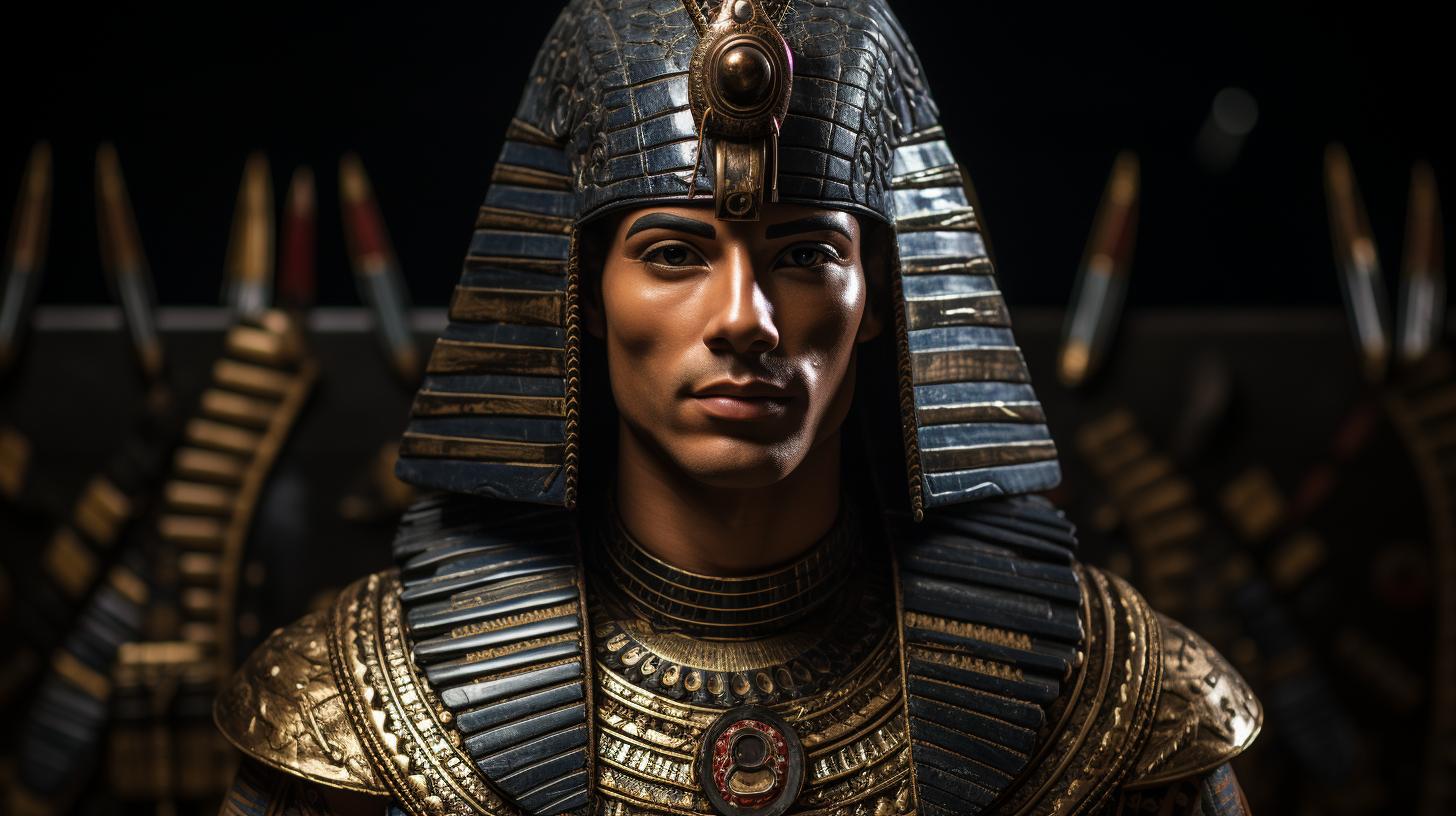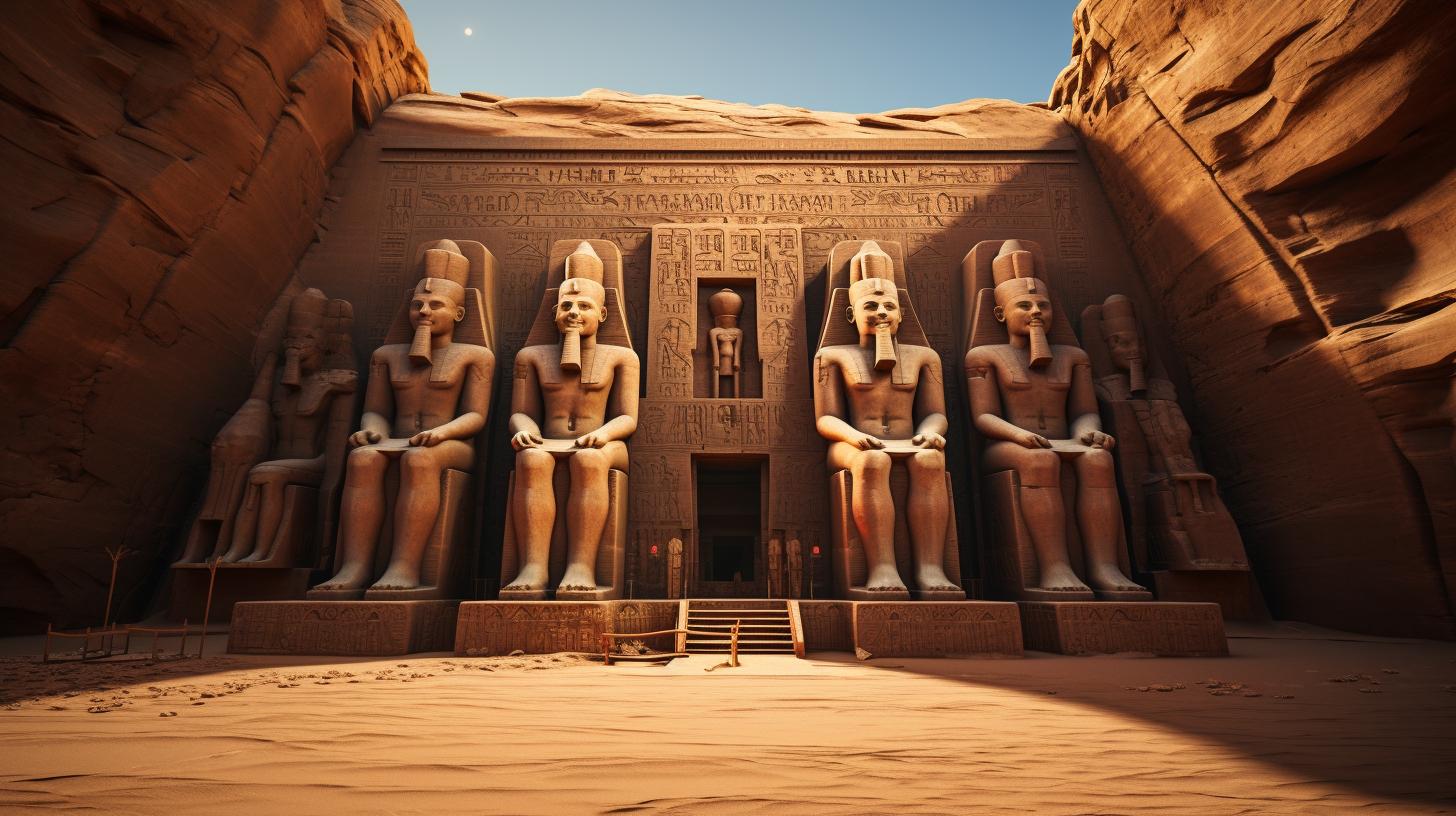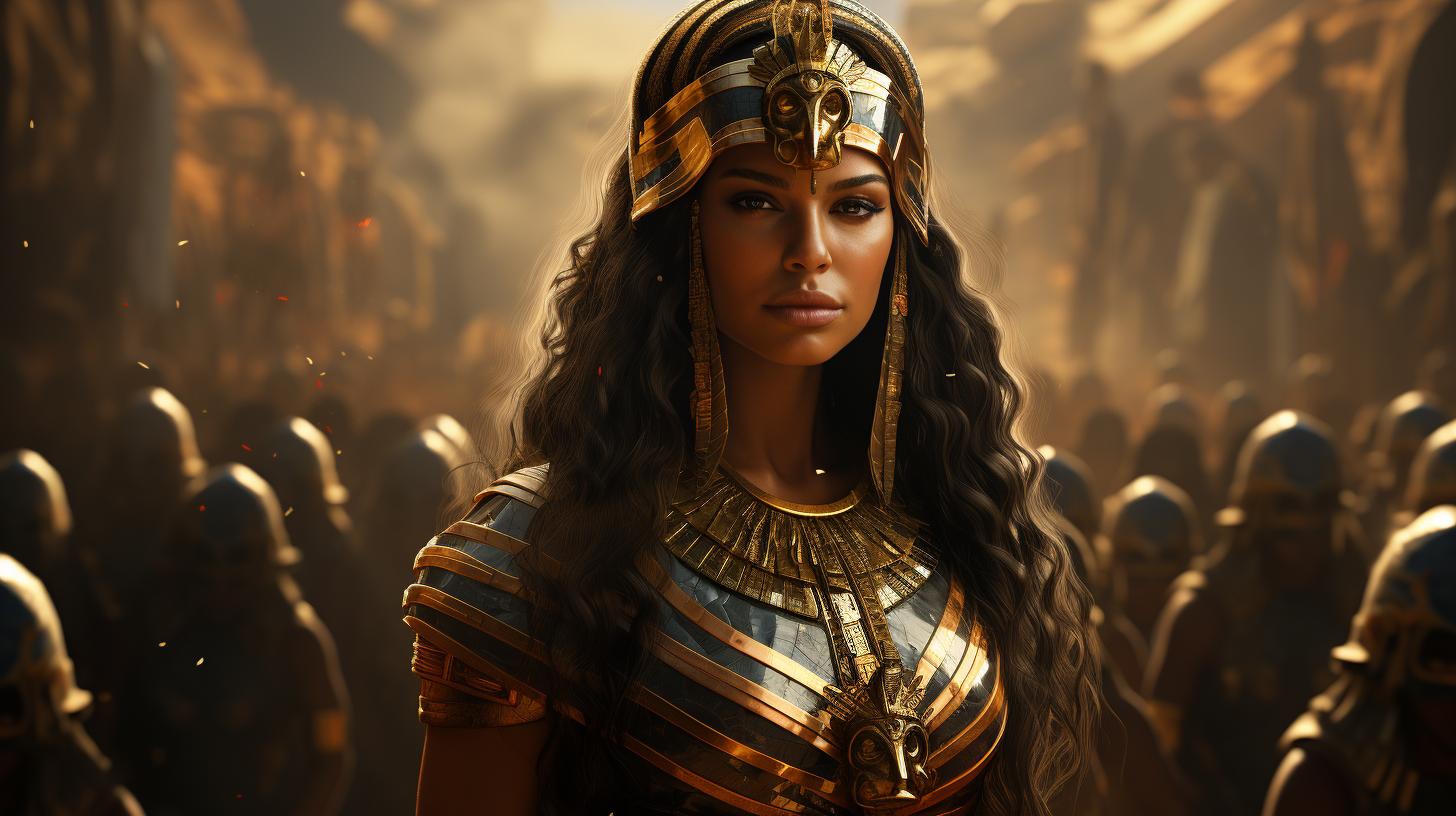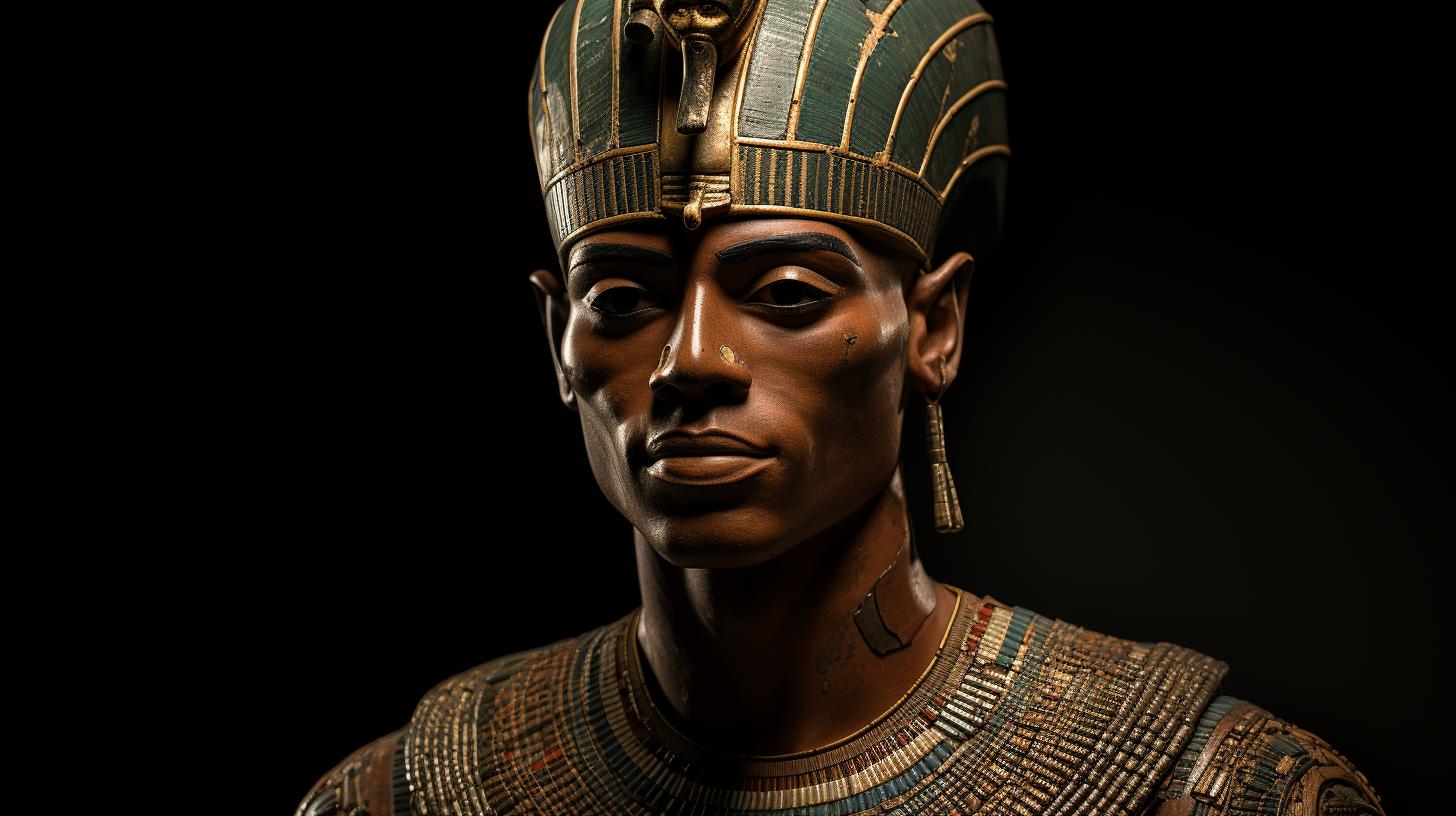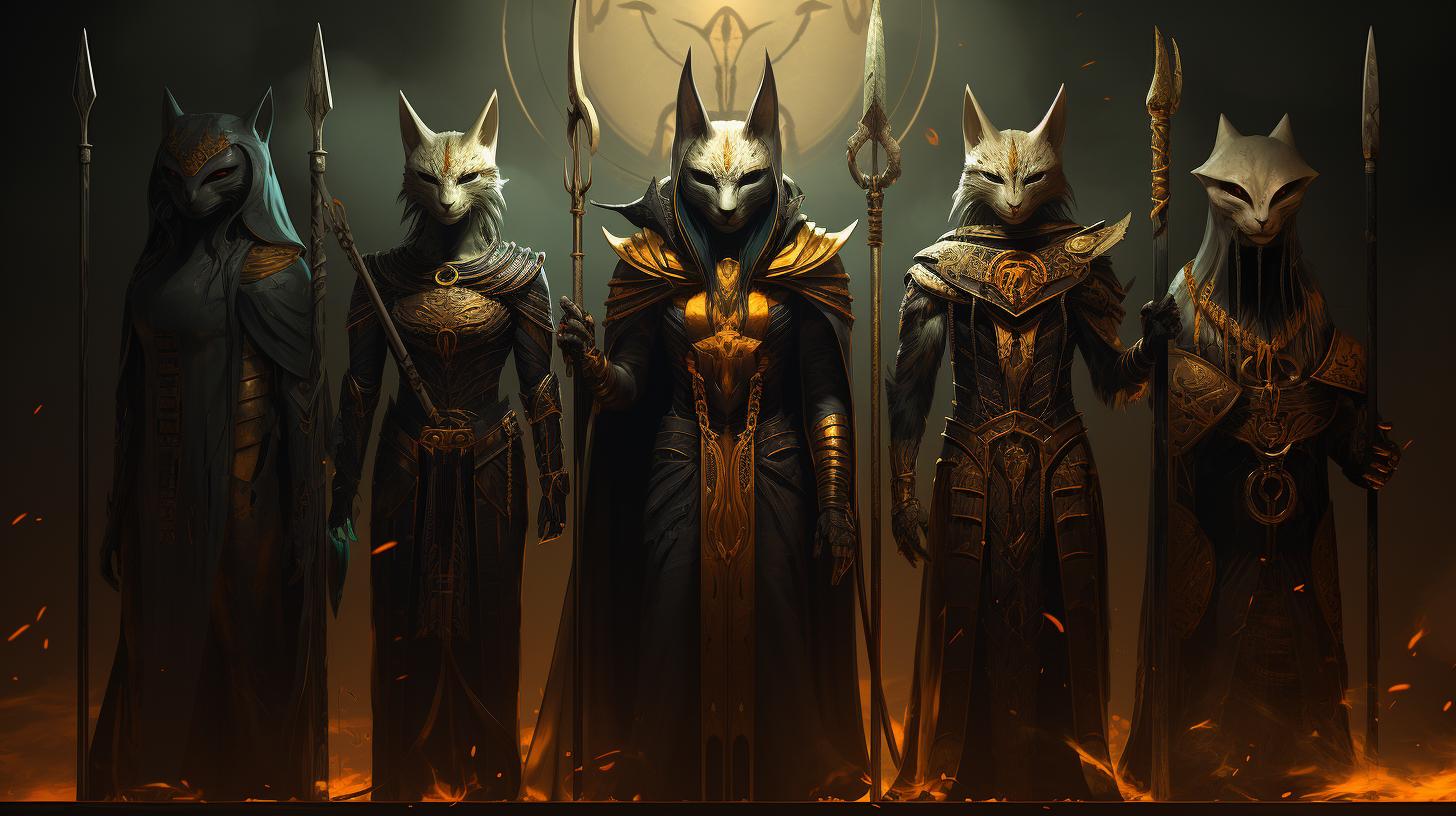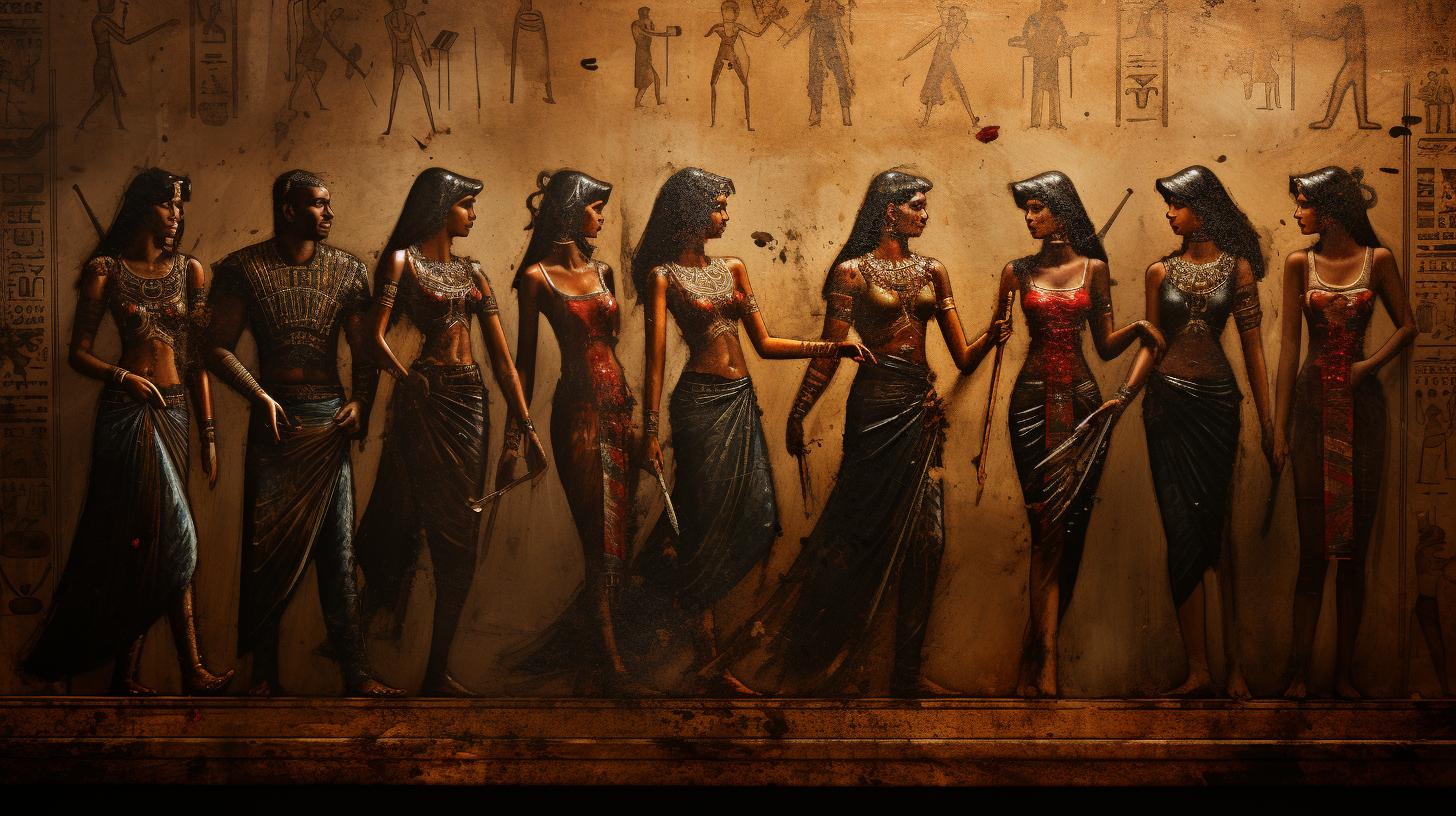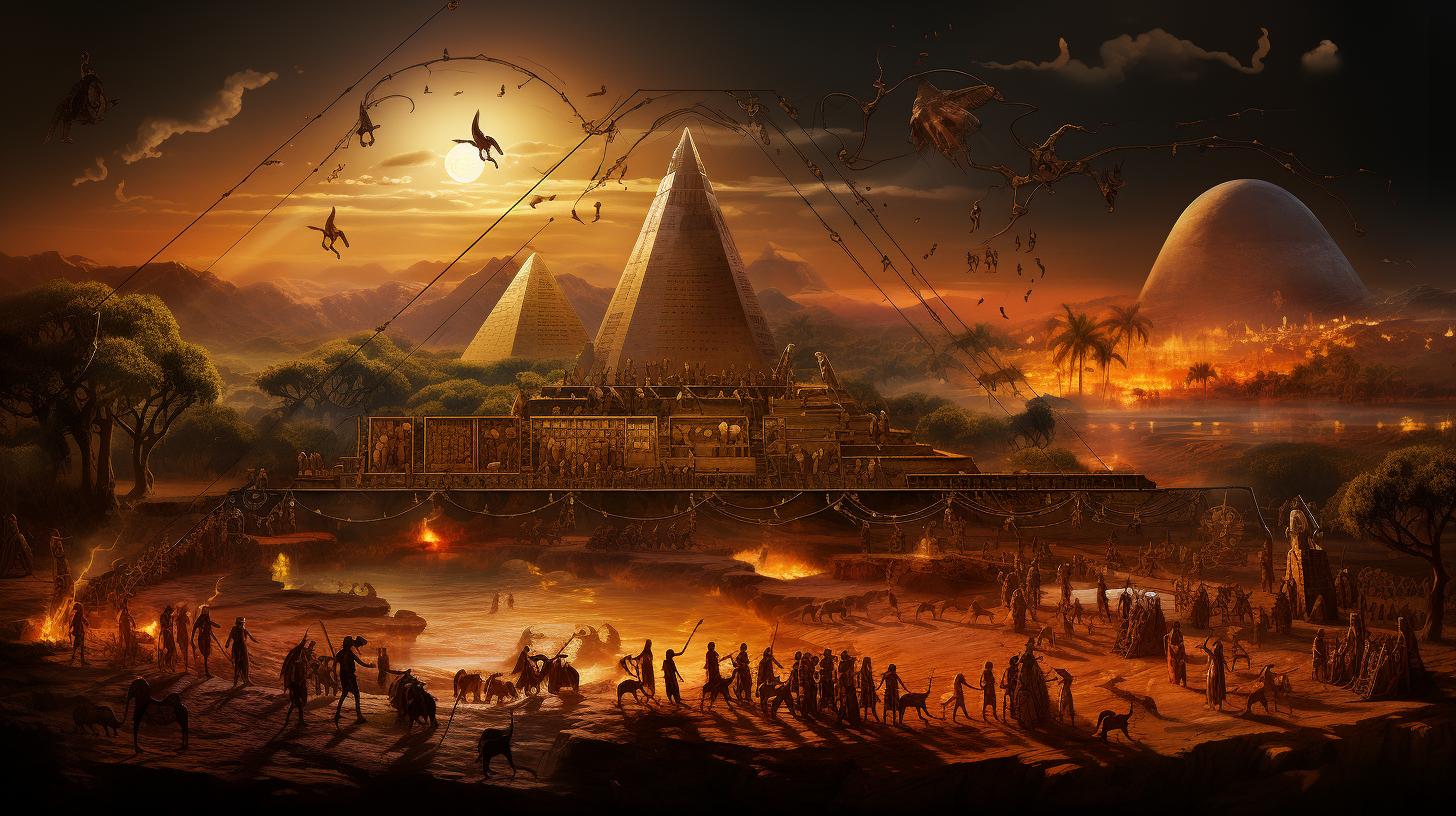Egyptian Pharaoh Ahmose: The Liberation Hero of Ancient Egypt
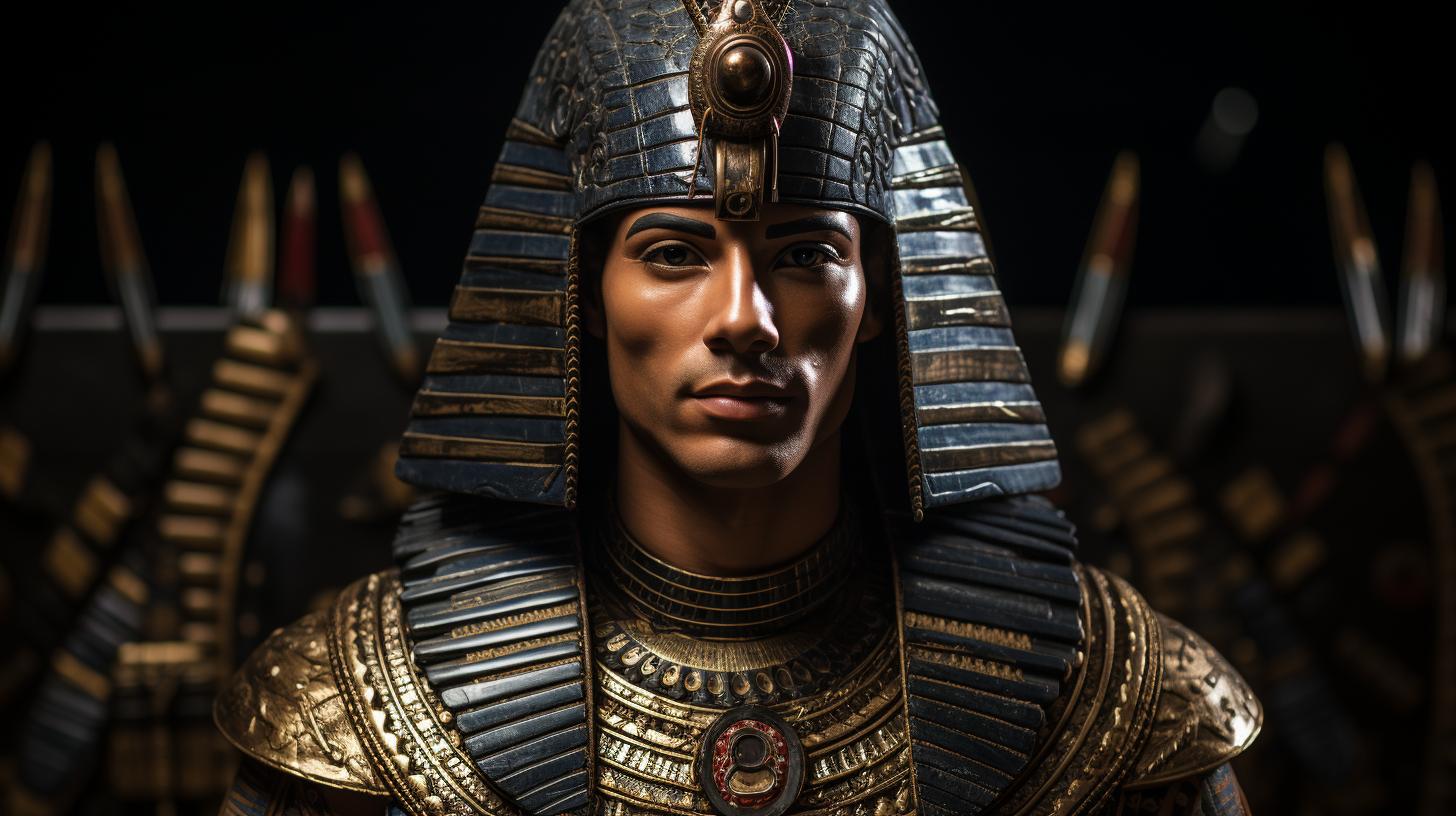
Ahmose, the Egyptian pharaoh, played a crucial role in the liberation of ancient Egypt. Rising amidst the conflict with the Hyksos invaders, he successfully expelled them and unified the country.
Ahmose achieved notable military victories, expanded Egyptian territory, and initiated economic development and infrastructure projects. His reign marked the beginning of the influential 18th Dynasty, and his cultural contributions, including art, architecture, and religion, left a lasting impact on Egyptian history.
Today, Ahmose’s legacy can be explored through his mummy, artifacts, and various research resources.
The Historical Context of Ancient Egypt
In order to understand the significance of Pharaoh Ahmose’s reign, it is essential to explore the historical context of ancient Egypt. This era was marked by several important events, including the 17th Dynasty and the Hyksos invasion.
The 17th Dynasty and the Hyksos Invasion
The 17th Dynasty of ancient Egypt saw the invasion of a foreign power known as the Hyksos. These rulers, originating from the eastern Mediterranean region, usurped control of the northern part of Egypt, known as the Delta area.
This occupation disrupted the political stability and autonomy of Egypt, causing widespread unrest and rebellion.
The Rise of Ahmose: From Rebel to Pharaoh
Ahmose emerged as a key figure during this tumultuous period of Egyptian history. Born in Thebes, he was the son of Seqenenre Tao and the brother of Kamose, who initiated the resistance against the Hyksos invaders.
Upon the deaths of his father and brother, Ahmose assumed the throne as Pharaoh and adopted the title Nebpehtyre, meaning “The Lord of Strength is Ra.”
Ahmose’s Reign and Achievements
Ahmose’s reign marked a pivotal period in ancient Egyptian history, characterized by his remarkable achievements and contributions. Through his strategic leadership and military prowess, Ahmose played a key role in restoring Egypt’s sovereignty and expanding its influence.
Expelling the Hyksos and Unifying Egypt
Ahmose’s first priority upon ascending the throne was to confront the Hyksos, who had long occupied and controlled parts of Egypt. With strategic planning and military campaigns, Ahmose successfully expelled the Hyksos from their capital, Avaris, ultimately liberating Egypt from their rule.
By reunifying Upper and Lower Egypt under his authority, Ahmose laid the groundwork for a strong and united kingdom.
Military Victories and Expansion of Egyptian Territory
Building on the success of his campaign against the Hyksos, Ahmose continued to achieve significant military victories. He expanded Egyptian territory, extending his influence into Nubia and Canaan, ensuring Egypt’s dominance in the region.
Ahmose’s military conquests not only secured the borders of Egypt but also solidified his reputation as a formidable ruler.
Economic Development and Infrastructure Projects
Ahmose’s reign was not solely focused on military achievements. He demonstrated a keen interest in the economic development and infrastructure of Egypt. Ahmose reopened quarries and mines, driving the economy forward and promoting trade.
Under his rule, large-scale construction projects were undertaken, including the construction of the last pyramid built by native Egyptian pharaohs. These projects symbolized the prosperity and grandeur of Ahmose’s reign.
Through his reign and achievements, Ahmose established the foundations of a powerful and prosperous Egypt.
His successful campaigns, territorial expansions, and economic endeavors left a lasting impact on ancient Egyptian history, shaping the future of the kingdom for generations to come.
The Royal Family of Ahmose
The lineage of Ahmose, from Seqenenre Tao to Amenhotep I, played a crucial role in the history of ancient Egypt.
Seqenenre Tao, the father of Ahmose, and Kamose, his brother, led the initial efforts to liberate Egypt from the Hyksos invasion. Ahmose continued their legacy and successfully expelled the Hyksos, establishing himself as the new pharaoh.
The Lineage of Ahmose: From Seqenenre Tao to Amenhotep I
Seqenenre Tao, often referred to as the “The Brave,” initiated the rebellion against the Hyksos. His courageous efforts inspired his son Ahmose to take up the fight and continue the liberation of Egypt.
Ahmose’s military prowess and strategic skills led to the ultimate victory, expelling the Hyksos and unifying Egypt once again under native rule.
Amenhotep I, the son of Ahmose and his queen Ahmose-Nefertari, succeeded his father on the throne.
He continued the path of rejuvenation and consolidation begun by his predecessors, laying the foundation for the prosperous New Kingdom of Egypt.
Ahmose-Nefertari: The Influential Queen of Ahmose
Ahmose-Nefertari, the principal wife of Ahmose, played a prominent role in supporting her husband’s reign. As an influential queen, she contributed to the stability and success of Egypt during this critical period.
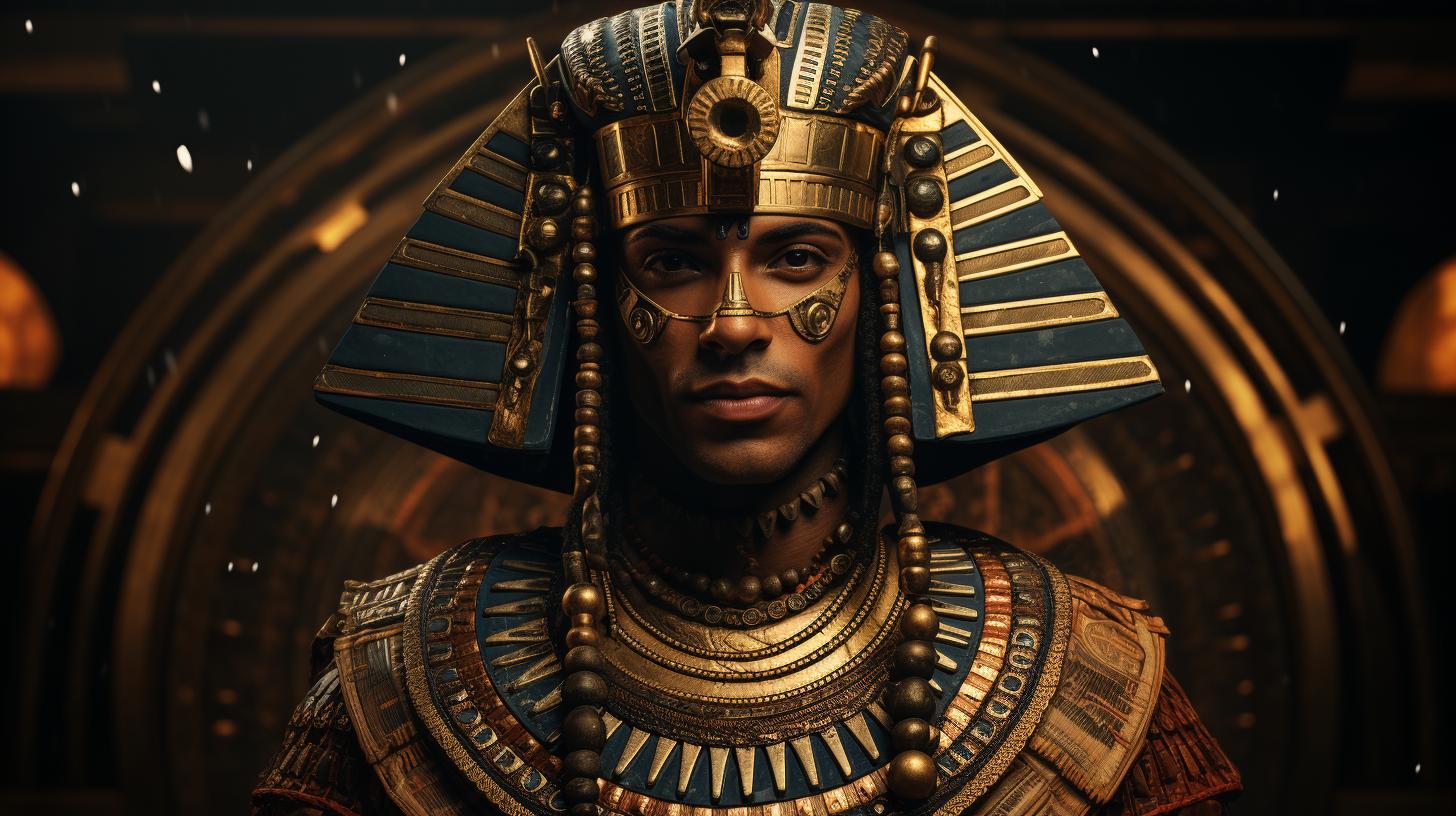
Ahmose-Nefertari’s support extended beyond the royal court, as she actively participated in religious activities and was known for her wisdom and guidance.
Ahmose-Nefertari’s contributions to the legacy of Ahmose and the XVIII Dynasty cannot be overstated.
Her partnership with Ahmose not only solidified their rule but also paved the way for future queens who would continue to shape Egyptian history.
Overall, the royal family of Ahmose, from Seqenenre Tao to Ahmose-Nefertari, played a significant role in the liberation of Egypt from the Hyksos and the subsequent rise of the 18th Dynasty.
Their leadership, bravery, and dedication to reclaiming Egyptian sovereignty established a strong foundation for the New Kingdom and set the stage for the cultural and political achievements that would follow.
The Influence of Ahmose on Egyptian History
Ahmose, the renowned Egyptian pharaoh, left an indelible mark on the course of Egyptian history.
His reign and achievements shaped the destiny of the ancient kingdom in profound ways. This section delves into the lasting legacy of Ahmose, exploring both the beginning of the 18th Dynasty and his impact on the New Kingdom and the pyramid builders.
Legacy of Ahmose: The Beginning of the 18th Dynasty
Ahmose’s triumph over the Hyksos invaders marked a pivotal turning point in Egyptian history, leading to the establishment of the illustrious 18th Dynasty. His military prowess and strategic leadership not only expelled the Hyksos but also unified Egypt under a single rule.
The reign of Ahmose set the stage for a new era of cultural, economic, and political prosperity that would endure for centuries to come.
Impact on the New Kingdom and the Pyramid Builders
Ahmose’s profound influence reverberated throughout the New Kingdom, a period known for its grandeur, wealth, and territorial expansion.
His military campaigns solidified Egypt’s control over its borders, allowing subsequent pharaohs to embark on ambitious conquests, establishing a vast empire. Furthermore, Ahmose’s reign saw the resurgence of pyramid building, with notable structures like the last pyramid erected by native Egyptian pharaohs standing as a testament to his architectural and cultural contributions.
The enduring impact of Ahmose on Egyptian history cannot be overstated. His reign not only brought forth an era of political stability and military might, but also fostered advancements in art, religion, and infrastructure.
Ahmose’s legacy continues to captivate historians, archaeologists, and enthusiasts alike, offering a window into the golden age of ancient Egypt.
Ahmose’s Artistic and Cultural Achievements
Ahmose’s reign was characterized by remarkable artistic and cultural accomplishments, leaving a lasting impact on ancient Egypt. Under his rule, art and architecture flourished, reflecting the power and grandeur of the pharaoh’s reign.
Art and Architecture During Ahmose’s Reign
During the time of Ahmose, Egyptian art experienced a revival, blending traditional styles with innovative techniques. Sculptures and reliefs became more naturalistic, conveying emotion and capturing the essence of the human form.
Ahmose’s reign witnessed the creation of stunning statues, intricately carved sarcophagi, and exquisite jewelry, showcasing the mastery of ancient Egyptian artisans.
Architecture also thrived during Ahmose’s rule. Temples, tombs, and administrative buildings were constructed with meticulous attention to detail and grandeur.
The use of durable materials like limestone and granite ensured the longevity of these structures. The iconic temple at Karnak, with its colossal columns and intricate hieroglyphic inscriptions, stands as a testament to Ahmose’s architectural legacy.
Ahmose’s Contribution to Ancient Egyptian Religion
Ahmose played a significant role in promoting religious practices and beliefs in ancient Egypt. He was a devoted follower of the god Amun, and during his reign, the cult of Amun gained prominence.
Ahmose undertook extensive temple construction and restoration projects dedicated to this powerful deity.
The pharaoh also embraced the role of a divine ruler, reinforcing the concept of the pharaoh as a direct link between the gods and the people.
Ahmose’s portrayal in art and inscriptions emphasized his divine status, showcasing him adorned with ritual regalia and performing religious ceremonies.
Furthermore, Ahmose’s reign witnessed the development of religious texts and rituals that would become integral to ancient Egyptian religious practices for centuries.
The ‘Book of the Dead,’ a guide to the afterlife, and funerary rituals were refined and standardized during this period, ensuring the prosperous journey of the deceased into the realm beyond.
In conclusion, Ahmose’s artistic and cultural achievements during his reign as pharaoh revolutionized ancient Egyptian art and architecture. His support of religious practices and beliefs shaped the religious landscape of Egypt, leaving a profound legacy that influenced future generations.
The artistic masterpieces and religious practices established under Ahmose’s rule continue to fascinate and inspire us today.
- Ahmose’s reign witnessed a revival of Egyptian art, with sculptures, reliefs, and jewelry showcasing the mastery of ancient Egyptian artisans.
- Architecture thrived during Ahmose’s rule, resulting in the construction of magnificent temples, tombs, and administrative buildings.
- Ahmose played a significant role in promoting religious practices, particularly the worship of the god Amun.
- He emphasized the divine status of the pharaoh and established the pharaoh’s role as a direct link between the gods and the people.
- Ahmose’s reign saw the development of religious texts, such as the ‘Book of the Dead,’ and standardized funerary rituals.
Exploring Ahmose’s Legacy Today
Discovering Ahmose’s legacy offers a fascinating glimpse into the rich history and cultural achievements of ancient Egypt.
Through the exploration of Ahmose’s mummy and the artifacts associated with his reign, we can delve deeper into the life and accomplishments of this remarkable pharaoh.
Ahmose’s Mummy and its Discovery
One of the most intriguing aspects of Ahmose’s legacy is the discovery of his mummy.
Archaeologists and scientists have meticulously examined the preserved remains, shedding light on Ahmose’s physical appearance, health, and even his cause of death. The study of his mummy has provided valuable insights into the royal burial practices and embalming techniques of ancient Egypt.
Exhibitions and Collections featuring Ahmose’s Artifacts
A number of exhibitions and collections around the world showcase the extraordinary artifacts related to Ahmose and his reign. These exhibits offer a unique opportunity to witness firsthand the intricate craftsmanship and artistic brilliance of ancient Egyptian civilization.
From statues and reliefs depicting the pharaoh to objects associated with religious ceremonies, these artifacts provide a tangible connection to Ahmose’s reign and the cultural significance of his era.
Visitors can explore these exhibitions and collections to gain a deeper appreciation for the legacy of Ahmose and the impact of his rule on ancient Egyptian history.
Through these exhibits, we can witness the artistry and cultural traditions that flourished under his reign, providing an immersive experience into the world of ancient Egypt during this pivotal period.
Further Research and Resources
Notable Books and Publications
For those interested in delving deeper into the life and reign of Ahmose, there are several notable books and publications available.
These resources provide extensive research and analysis, shedding light on various aspects of his accomplishments and the historical context of ancient Egypt.
- Ahmose and the Liberation of Egypt by Richard H.
Wilkinson: This insightful book examines Ahmose’s role in liberating Egypt from the Hyksos, exploring his military campaigns, political achievements, and cultural contributions.
- The Pharaohs of Ancient Egypt by Joyce A. Tyldesley: This comprehensive guide covers the reigns of various pharaohs, including Ahmose, and provides an overview of their legacies and cultural impact.
- Ancient Egypt: History and Culture by Bob Brier and Hoyt Hobbs: A well-researched publication that includes a dedicated chapter on Ahmose, discussing his reign, military successes, and the significance of his rule in Egyptian history.
Research Institutions and Online Sources
In addition to books, there are reputable research institutions and online sources that offer valuable information and scholarly resources related to Ahmose and ancient Egypt.
- The Metropolitan Museum of Art: The Met’s Egyptian collection features artifacts from various periods, including those from Ahmose’s reign. Their online database provides detailed descriptions and images for further exploration.
- The Oriental Institute of the University of Chicago: This renowned institution houses significant archaeological collections and has an extensive research library available to scholars and the public, with valuable resources on ancient Egypt.
- Encyclopedia Britannica Online: A reputable online resource that offers detailed articles on topics related to Ahmose and ancient Egypt, providing reliable information for further study.
These notable books, research institutions, and online sources serve as valuable references for those seeking to expand their knowledge and delve deeper into the history, achievements, and legacy of Ahmose and the fascinating era of ancient Egyptian pharaohs.
.











